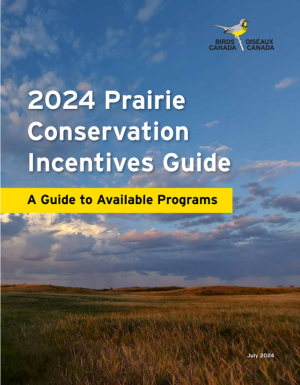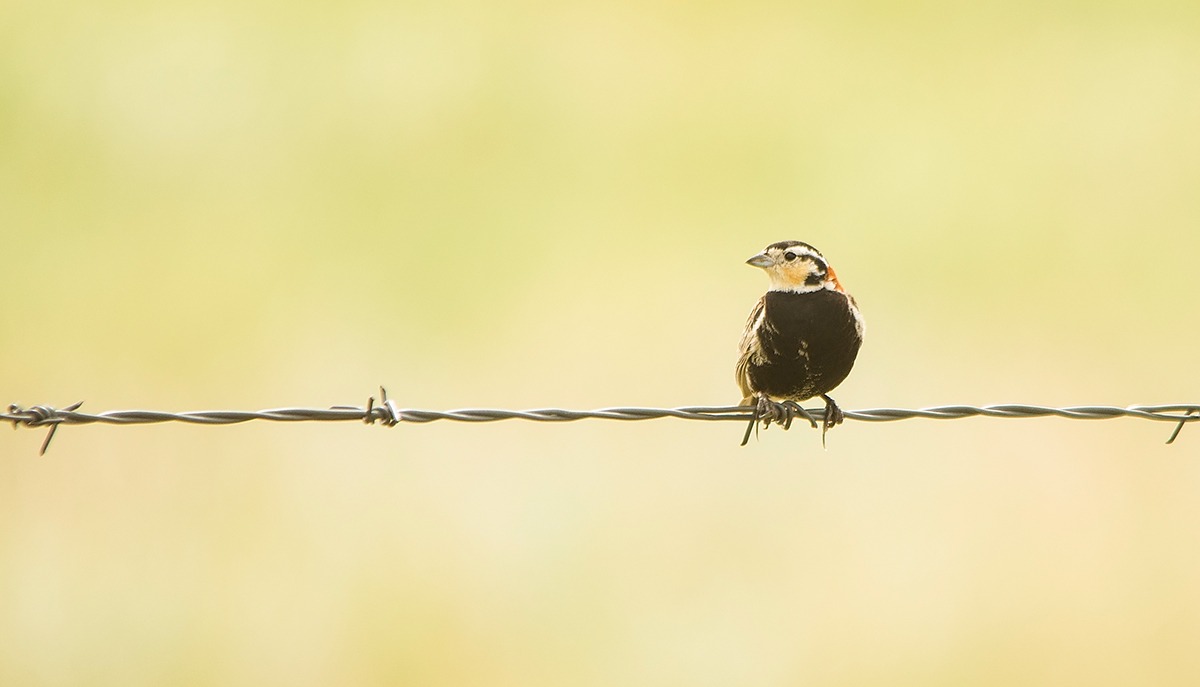Across North America, birds that depend on grasslands are in steeper decline than most other groups of birds. 67% of Canada’s grassland birds have disappeared since 1970.
Just released, this collaborative paper outlines the opportunities that policy changes offer to conserve grasslands and all the birds, mammals, plants, insects, amphibians, and reptiles that rely on these largely working lands. Watch the webinar and download the report.
Bird-Friendliness Index (BFI)
As a dependable, scalable, and actionable biodiversity indicator that is adaptable to a variety of working landscapes, the BFI addresses the challenge of quantifying biodiversity impact at a farm level and then communicating those impacts throughout agri-food supply chains.
The Prairie Conservation Incentives Guide contains over 30 conservation and stewardship programs to help connect to connect Prairie farmers and ranchers with the programs will help achieve their conservation goals.
The Prairies, with their grasslands and wetlands make up one of the most important biomes for birds in North America. In spring and summer, pastures flutter with grassland specialists, that are unique to and totally reliant upon North America’s grasslands. Waterfowl and shorebirds use the prairie ‘pothole’ wetlands as havens to raise their young or as places to rest and refuel before they continue their journey to the Arctic. Swallows and kingbirds pluck flying insects right out of the sky above wetlands and streams and hawks use the sporadic trees to scan for their next meal.
However, grasslands are among the most endangered ecosystems on the planet, and the birds that depend on them are declining faster than any other bird group in Canada. Since 1970, Canada’s grassland bird populations have plummeted by 67%, with several species, like the Chestnut-collared Longspur and Sprague’s Pipit, at risk of disappearing entirely. The primary cause of these declines is habitat loss, driven by the conversion of grasslands into cropland and urban development. Every year, we lose thousands of hectares of grassland across the Prairies. Meaning that thousands of homes are lost for grassland birds.
When ranching becomes economically unsustainable, grasslands are often tilled to grow annual crops. This conversion releases vast amounts of stored carbon, further exacerbating climate change.
Grassland birds evolved with large grazers and well managed grazing of cattle provides the habitat conditions these birds need. In fact, one of the best mechanisms we have to keep grasslands intact is having them as economically viable working landscapes. When farmers and ranchers are to generate a livelihood from grazing livestock, like cows, on these grasslands, it creates a mechanism to keep these grasslands intact. And while critically important, this isn’t the only mechanism. Indigenous-led conservation will be crucial to grassland bird conservation.

Ferruginous Hawk Photo: Sean Jenniskens
Birds Canada is committed to stemming the loss of grasslands and reversing the decline of grassland bird populations. Our efforts focus on working collaboratively with farmers, ranchers, and policy-makers, and Indigenous communities to address the underlying causes of grassland bird declines.
Through initiatives like the Bird-friendliness Index (BFI), we are helping to enable an agricultural system that actively conserves and recovers birds. The BFI, originally developed by the National Audubon Society and adapted to the Canadian Prairies by Birds Canada, measures the contribution to bird conservation farms support are providing. Farms that score highly on the BFI provide better habitat for grassland birds, and Species at Risk.
We’ve produced the Prairie Conservation Incentives Guide that outlines over 30 conservation and stewardship programs that pertain to grasslands, wetlands, riparian areas and croplands across Manitoba, Saskatchewan and Alberta. This guide aims to connect farmers and ranchers with the programs that currently exists that will help achieve their conservation goals.
To complement the Incentives Guide, Birds Canada has also produced a Climate and Biodiversity Friendly Production Practices Resource Guide. This resource guide has 30 resources that farmers and landowners can utilize to help them implement practices on their land that will improve carbon sequestration, as well as provide and enhance habitats for grassland birds and all grassland biodiversity.
Birds Canada is also leading policy work and in the report Stemming the Loss of Grasslands in Canada-A Scan of Policy Solutions, we’ve identified opportunities that policy changes offer to conserve grasslands. We are now working towards implementation of those policies including advocating for policy changes that recognize the value of grasslands as providers of Ecological Goods and Services (EG&S), such as carbon sequestration and flood mitigation.
Together, we can protect Canada’s grasslands and ensure that the melodies of Meadowlarks and the buzzes of Grasshopper Sparrows continue to fill the air.
For further reading on the issues facing grassland birds and Birds Canada’s work in the Grasslands, please see these articles:
- Prairies an Ideal Setting for an Iconic Cast of Birds
- Livestock Producers are Powerful Allies for Grassland Birds
- How your Purchasing Decisions Can Help Grassland and Prairie Birds
- I am Concerned About Climate Change – Can I Still Eat Beef?
For more information, contact:
Ian Cook, Grassland Conservation Manager






